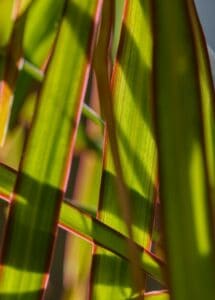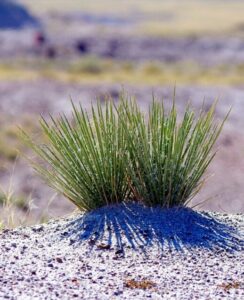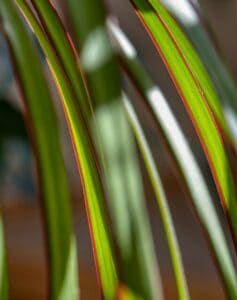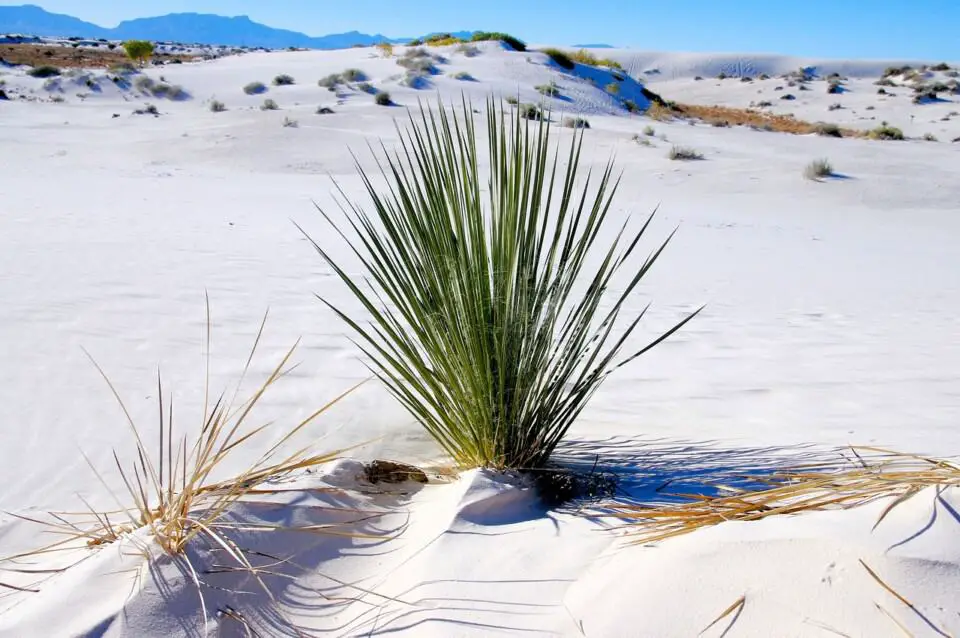Some links in the post are affiliate links and I get a commission from purchases made through some links found in the post.
“Is that yucca with a double c or a single c?” he asked, closely eyeing me. My neighbor and I had been discussing what we liked most about the dracaena and how it compared to the yucca.
But it turns out that what he had in mind was the yuca, a root vegetable. On the other hand, I was talking about the yucca, the flowering plant.
And once we realized that we had been miscommunicating for the past few minutes, we laughed it off and headed to our homes.
But that did not satisfy my curiosity about these plants. Was there a better option between the two? I had to find out, and this is what I came up with:
Commonly you will find a yucca as an outdoor plant and a dracaena as in indoor plant, however with the region and growing conditions they can be grown in either.
The yucca is a herbaceous perennial, it remains active throughout the seasons. But the dracaena classifies as an evergreen.
Dracaena Vs Yucca – What Are the Similarities?
The whole point behind my debate with my neighbor was that I wanted to introduce a yucca to my home. And he, being a plant lover, had some thoughts about the two.
So, I was taken aback as he took me through what I could expect from a yuca. I had not expected the species to be that different.
But once we cleared up the fact that he was, in fact, talking about a yuca and not a yucca, it became easier to figure out what these plants had in common.:
1) The Names Dracaena and Yucca Represent a Genus
 Let’s start with the basics. What is a dracaena? The term dracaena refers to the dracaena genus, which comprises more than 150 species.
Let’s start with the basics. What is a dracaena? The term dracaena refers to the dracaena genus, which comprises more than 150 species.
Thus, it is not a plant but rather an umbrella term that refers to species under it.
Examples of dracaenas include the Marginata, Deremensis, and Fragrans – and all these species share different features in terms of size, life span, aesthetics, and habitat.
The same holds for yucca, a genus comprising more than 40 plants. Examples include Aloifolia and Gigantea. Just like the dracaena, the species under this genus are quite varied.
2) They are Slow-growing Plants
The dracaena is a slow-growing plant that reaches about 1.5 feet each year. Indoors, it takes nearly a decade to reach six to ten feet.
And in the wild, it can grow up to 50 feet, but this takes several years to accomplish. Yucca is not any different. In the outdoors, it grows about two feet a year.
And when indoors, the growth slows to about 1.5 feet a year. Thus, regardless of the plant you choose, you should not expect the species to take over the room soon.
We have an article on how big can a dracaena get which may interest you.
3) They Grow Quite Big Indoors
The yucca grows about three to eight feet tall on average when grown indoors. And the dracaena reaches about 6 to 10 feet in indoor conditions.
Please note that these plants are both slow-growing, and it thus takes a few years for them to reach such heights.
4) They Prefer Indirect Light
The yucca does not like bright direct light as this can damage its leaves, resulting in crisping, browning, or even spotting on the surface.
And this interferes with its ability to make food. It thus does best in bright and indirect light. The same holds for the dracaena, which prefers medium to bright indirect light.
While a few of its species do well in bright sun, most do not like such exposure and will die in such conditions.
The best way to care for these plants is to ensure they get at least six hours of indirect light from an east or west-facing window.
Moreover, you should not shield them from light too much, as poor light exposure results in leggy growth with small leaves and weak stems.
5) They Both do Well in Slightly Acidic Soil pH
The dracaena prefers slightly acidic soil (6.0 to 6.5). The yucca also does well in this range, as it prefers neutral to acidic soil conditions.
6) They prefer hot regions
If you want to grow the dracaena outdoors or even indoors, it’s always best to check the suitability of your hardiness zone.
Ideally, species in this genus thrive in USDA zones 10 to 12 as the temperatures are quite high. For the yucca, it’s best to be in hardiness zones 9 to 11.
Both the yucca and dracaena bloom. For the yucca, this takes place from mid-summer to early fall, giving rise to creamy white or pink flowers. With the dracaena, the bloom time varies based on the species.
You may also like: 5 Great benefits of a dracaena for your home
Dracaena Vs Yucca – What Are the Differences?
 Whenever you want to introduce a new plant to your home, you must understand what it needs compared to the other plants in the space.
Whenever you want to introduce a new plant to your home, you must understand what it needs compared to the other plants in the space.
For example, if you bring in a humidity-loving plant, you must consider whether the existing species also love humidity.
That way, you can avoid specialized care for each plant, which can make maintenance work harder. So, what makes these plants different?
1) The Plant Type
Will your plant come back year after year? Well, with the yucca, the answer is a yes! This yucca is a herbaceous perennial, which means it remains active throughout the seasons.
But with the dracaena, this is not always the case. The dracaena classifies as an evergreen. And whether it makes it through all the seasons comes down to the care you give it.
The plant can survive the winter if you live in USDA zones 10 to 12 or if you shelter it from the frost. But if you do not overwinter the plant, you will need to start over again when spring comes.
2) The Habitats
Most of the differences below are easy to understand once you consider the native habitats of these species. Yucca is native to the hot and dry areas of North America and the Caribbean.
On the other hand, the dracaena is native to tropical regions in Africa, Southern Asia, and Northern Australia. And that explains the following key differences:
3) The Soil Preferences
With most plants, gardeners advise you to go for nutrient-rich and well-draining potting mixes. But with the yucca? – This will not work.
These species do best in sandy and dry regions where nutrients are few and far between. As such, to replicate this, you need to put them in sandy soils.
You should not amend the soil so much as this can throw them off their game. Instead, add some perlite and sand to an ordinary potting mix, and the plant will be fine.
Can this also work for the dracaena? Not at all – the dracaena is native to tropical regions where it has access to a hoard of nutrients and water.
It prefers well-draining nutrient-rich soil like most other houseplants. As such, you should get a high-quality potting mix from the start and go easy with the perlite.
We have an article on what is the best soil for a dracaena marginata.
4) The Watering Schedules
The Yucca is native to hot and dry areas, and its roots have thus adapted to such conditions.
The plant can hold onto water for long periods and does not respond well to being watered often.
After all, the plant will not absorb much water, and the roots thus end up sitting in water too long, which can damage them.
You should only water this plant once a week during active growing seasons and once every few weeks in the winter. When it comes to the dracaena, the case is a bit different.
While it does not enjoy sitting in water, it does not appreciate neglect and will respond harshly to dry soil. You should water the plant often, ensuring the soil does not dry out.
The rule of thumb, in this case, is to water the plant when the top inch of soil feels dry to the touch.
5) The Temperature Ranges
Dracaenas are quite sensitive to temperature fluctuations, seeing as they grow in tropical regions where temperatures are quite high.
On average, they prefer temperatures above 65 degrees Fahrenheit. Only some species can withstand temperatures below 50 degrees Fahrenheit.
But the Yucca does well in a wide range of temperatures owing to desert adaptations.
Even when the temperatures fall to 30 degrees Fahrenheit or soar to 90 degrees Fahrenheit, they still do well. That makes it easier to grow them indoors without regulating the heat.
You may also like: Dracaena marginata light requirements
6) Feeding
The yucca is accustomed to growing in nutrient-poor soils and does not often require you to feed it.
It can thrive on a monthly feed during its active growing seasons. In the case of the dracaena, weekly or bi-weekly feeding sessions are the most effective during the growing seasons.
These factors determine how compatible these plants are in the same space. Given how adaptable the yucca is, you can grow them in the same room without changing much.
All you need to do is offer each plant a different feeding, watering, and overwintering regimen, and they will be good.
Final Thoughts
 I currently have the Dracaena Marginata at home, and it’s been doing well. And as I concentrate on speeding up its growth, I am now eager to get a yucca in my home.
I currently have the Dracaena Marginata at home, and it’s been doing well. And as I concentrate on speeding up its growth, I am now eager to get a yucca in my home.
After all, these plants are not so different that I would need to change much in my space.
Happy Gardening!
Before you go, here are some more related articles I encourage you to read below to help solve more of your gardening issues:
How to Care for a Dracaena Outdoors
How to Save a Dying Dracaena Marginata Plant


